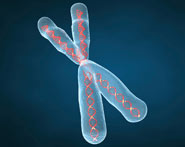


 النبات
النبات
 الحيوان
الحيوان
 الأحياء المجهرية
الأحياء المجهرية
 علم الأمراض
علم الأمراض
 التقانة الإحيائية
التقانة الإحيائية
 التقنية الحيوية المكروبية
التقنية الحيوية المكروبية
 التقنية الحياتية النانوية
التقنية الحياتية النانوية
 علم الأجنة
علم الأجنة
 الأحياء الجزيئي
الأحياء الجزيئي
 علم وظائف الأعضاء
علم وظائف الأعضاء
 الغدد
الغدد
 المضادات الحيوية
المضادات الحيوية|
Read More
Date: 15-12-2021
Date: 25-9-2021
Date: 7-11-2021
|
Nuclear magnetic resonance (NMR) spectroscopy measures the absorbance of radio frequency electromagnetic energy by certain atomic nuclei. “NMR-active” isotopes of biologically relevant elements include 1H, 13C, 15N, and 31P. The frequency, or chemical shift, at which a particular nucleus absorbs energy is a function of the isotope itself as well as the presence and proximity of other NMR-active nuclei. In one-dimensional NMR a single isotope, for example 13C, is monitored. The resulting chemical shift data can be used to identify the functional group in which each atom resides, for example, -CH2- or-CHOH-, as well as the presence of any NMR-active nuclei bound to it. Two-dimensional NMR exploits the coupling of NMR-active nuclei through space, called the nuclear Overhauser effect (NOE), to determine the proximity of two different NMR-active nuclei, for example, 1H and 13C or 1H and 15N, to one another. From this information, the spatial relationships between component atoms can be used to construct a three-dimensional structure.
Since NMR spectroscopy analyzes proteins in aqueous solution, it can be used to observe changes in protein conformation that accompany ligand binding or catalysis in real time. It also provides an avenue for determining the three-dimensional structures of proteins that are difficult or impossible to crystallize. The noninvasive and nondestructive nature of NMR also offers the possibility of one day being able to observe the structure and dynamics of proteins within living cells.



|
|
|
|
التوتر والسرطان.. علماء يحذرون من "صلة خطيرة"
|
|
|
|
|
|
|
مرآة السيارة: مدى دقة عكسها للصورة الصحيحة
|
|
|
|
|
|
|
نحو شراكة وطنية متكاملة.. الأمين العام للعتبة الحسينية يبحث مع وكيل وزارة الخارجية آفاق التعاون المؤسسي
|
|
|